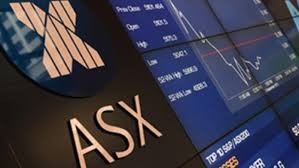Weekly Market Review
Written and accurate as at: Nov 13, 2017 Current Stats & Facts

The S&P/ASX 300 gained 1.1% last week, maintaining its recent momentum. A-REITs staged strong gains, with the S&P/ASX 200 AREIT index up 4.3%, however there was little move in bond yields to explain this. As we near year end it is important to remain mindful of the rotation out of the year’s winners and into laggards that often occurs in December and into the new year.
Mass arrests among the Saudi elite, the resignation of the Lebanese Prime Minister, and speculation around Iran ratcheting up pressure on its Sunni rivals via various proxies saw the oil price gain a further 3% to hit $64. As we have written before, the move in the oil price has mainly been in the spot price, while the longer end of the forward curve has remained constant, suggesting that the market sees the price spike as a short-term response to production pressures. However this could change if people start to expect a sustained spike in Middle Eastern tensions.
Elsewhere in resources, iron ore saw a slight bounce. An analyst trip last week to China leaves us reasonably sanguine on the outlook for iron ore, but it is important to understand that while the price and demand for highest grade ore (62% fines) remains strong, the discount for lower-grade ore (58% fines) is at historically wide levels. With the Chinese government enforcing a reduction in steel production – in order to restore SOE profitability and to address environmental issues – mills are using the best quality ore as it delivers the highest yield from blast furnaces and reduces the resulting pollution. In the past mills would substitute lower for higher grade ore when the former’s discount reached around 20%, however this is no longer happening and the discount is now out to around 30%. This is ultimately seeing some low-grade production being knocked out as the price falls below break-even, and is supportive of the iron ore price in general.
Chemical company Orica (ORI) was among the market’s weakest stocks, falling 13.2% following its results as management flagged significant investment next year to upgrade systems and products. Volume growth was also more subdued than many had expected. The stock had enjoyed a strong run this year on the expectation that it would benefit from a pick-up in mining activity, and the pull-back last week demonstrates that investors need to be careful when playing second-derivative exposures to a theme as the leverage sometime does not eventuate. ORI’s competitor Incitec Pivot (IPL) reports this week and fell 2.1% in sympathy. Elsewhere in the resources complex Alumina (AWC) was down 8.2% as some of the steam came out of the alumina/aluminium trade that has surged in recent months.
There seemed to be some profit taking in Qantas (QAN) (-4.8%), although the market may also have been worried about the recent rise in oil. QAN hedges it fuel costs and the price activity will have little effect, although if the oil price maintains its current strength it may start to bite in later years.
Westfield (WFD) (+8.5%) enjoyed a decent bounce, as did fellow retail REITs Scentre (SCG) (+4.0%), Mirvac (MGR) (+5.9%) and Vicinity (VCX) (+5.2%), with signs of some M&A activity in US retail malls providing the excuse for an oversold sector to bounce. JB Hi-Fi (JBH) (+4.5%) also enjoyed some respite from the market’s recent trepidation around traditional retail in the face of Amazon’s arrival, although further detail on Amazon’s Australian strategy – expected in an announcement any day now – will probably spark further volatility.
James Hardie industries (JHX) (+7.3%) was also among the market’s strongest performers as its quarterly result revealed a better-than-expected margin. The hurricanes which lashed the American south have disrupted demand for its building product, driving total margin higher given the margins are higher in the northern than southern United States. That aside, there were signs that the company is starting to respond to their recent production issues in North America. JHX also announced the acquisition of German-based Fermacell, Europe’s largest maker of fibre gypsum boards. The price paid was full, given that it will probably take several years to establish Fermacell as a vehicle to allow JHX to push into the European fibre cement market. Nevertheless, it will be earnings accretive from the outset given it is entirely debt financed at the current low rates.
Fund manager Janus Henderson (JHG) (+6.1%) delivered a decent result, with the market prepared to look through some one-off issues to the improvement in underlying trends on fund flows and performance. Elsewhere in financials Commonwealth Bank (CBA) (+3.9%) delivered a decent quarterly update, demonstrating that beneath the issues it faces with Austrac and the search for a new CEO, it is benefiting from positive trends in terms of margins. Westpac’s (WBC) (-2.9%) underlying results were also fine, although the market was disappointed by a number of one-off charges for “make-good” payments to clients. This is indicative of efforts banks are making to get ahead of a possible Royal Commission by dealing with any lingering issues up-front.










